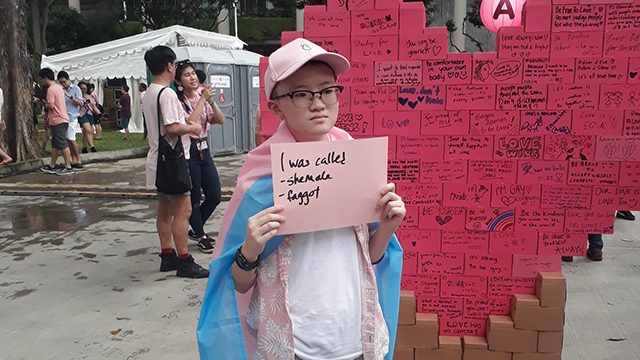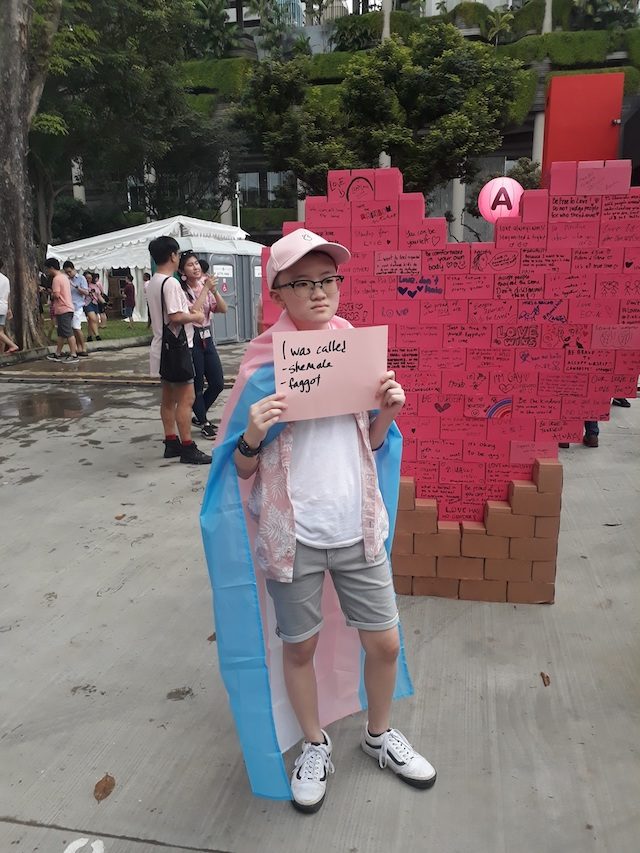SUMMARY
This is AI generated summarization, which may have errors. For context, always refer to the full article.


Hong Lim Park is the only designated venue for Singaporeans to protest, but for one day in June for the past 11 years, it turns into a field of pink.
Pink Dot SG is a non-profit movement started by a group of individuals who believes that everyone deserves the freedom to love. Why pink? Pink is the color of the Singapore National Registration Identity Card, but it is also the color when you mix red and white – the shades of the Singaporean flag.
Pink Dot stands for an open, inclusive society within our Red Dot – a popular nickname for Singapore – where sexual orientation represents a feature, not a barrier. Beyond the narrative, the movement seeks to urge the Singaporean government to repeal S377A, which criminalizes sex between consenting adult men.
Pink Dot did not resonate with me at the start. Action, though, does speak louder than words, and Pink Dot has now seen more than a decade’s worth of activism, so I figured that they must be doing something right. So, I suspended all beliefs and decided to brave the crowds for the first time this year.
My first impression was the volunteers’ genuine exuberance, raising their palms to invite high fives from attendees moving through the queue. Drag queens and muscle Marys were posing for pictures, and others were, well, just posing. Singaporean youths made up the majority. I felt like that cool uncle lending support to their niece or nephew when their parents didn’t approve. The energy was palpable and nothing like I have experienced before in Singapore.
I stood still at one spot to make sense of this energy. Clearly everyone from the volunteers, organizers, and attendees wanted to be there, but there was more. This wasn’t just some pink-themed picnic or a ‘peaceful’ protest.
I didn’t have to look very far.
Amid the crowds of revelers, I spotted a rather sullen-looking young teen holding up a sign that read, “I was called a she-male and faggot.”
I honestly could not fathom the teen’s gender, but I was taken aback by how young they were. No more than 15? They were giving a video interview to the Pink Dot crew about their brush with discrimination in school. But the interview looked more like a desperate plea as their innocent, childlike voice competed with the thumping music and cheers of “Welcome to Pinkdot!”
No one was by their side. I think they were alone.

I hope we get to hear their full story, because such courage doesn’t exist in a vacuum. It must come from a place of intense hurt and betrayal.
I then bumped into an old friend recruiting singers at his booth. Our 20-year friendship is founded on our love for music and food, but I saw a new side to him that day. Just a month ago, in fact, I told him how unfulfilled he looked at his day job. Fast forward to Pink Dot, and I couldn’t help but notice how the event made him feel alive and happy. Our friendship reached a new level of awareness and understanding that evening.
I think the power of Pink Dot is not in the solidarity it produces, but in its rejection. The stoic rejection by the church, conservatives, friends, families, and colleagues, and, yes, the authorities’ refusal to repeal S377A. Whether intended or not, this rejection has propelled Pink Dot to push for change, and it has also allowed for the stories of this young teen and many others to be told.
Dr Brene Brown of Tedtalk fame defines connection as the energy that exists between people when they feel seen, heard and valued; when they can give and receive without judgment; and when they derive sustenance and strength from the relationship.
In this respect, rejection births connection. For just one day of the year, the LBGTQ+ community and their loved ones can be brave and vulnerable. They know that as scary as it is to tell their stories, there are hundreds of others out there at Hong Lim Park to make them feel less alone.
But what happens after the music dies and the lights go out on Pink Dot? Where do people go then to reconnect in their day-to-day grind of living and discrimination?
I don’t really know, but as long as the LBGTQ+ community faces rejection, more stories will surface and even more will come along the way to lend their support, even if it’s just during one day of the year. Perhaps the continued rejection will cause a rippling effect of support and kindness till there won’t actually be a need to have a Pink Dot anymore.
I really get it now. Pink Dot isn’t just about repealing S377A. It is really about the persistent rejection, and the power of connection that comes from that rejection.
Pink Dot is connection. – Rappler.com
James Leong is a Singaporean and runs his own media consultancy and counselling practice at Listen Without Prejudice.
Add a comment
How does this make you feel?
There are no comments yet. Add your comment to start the conversation.